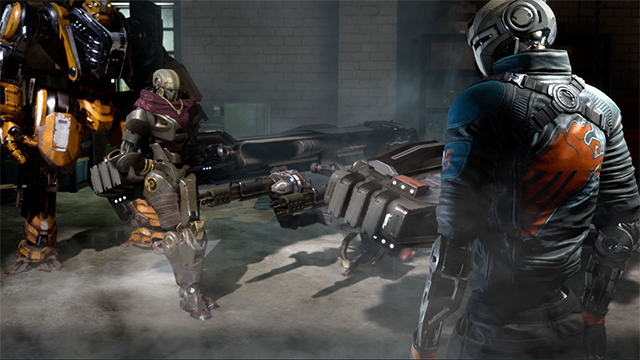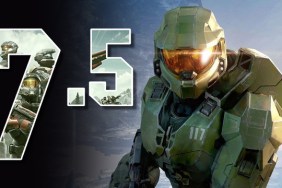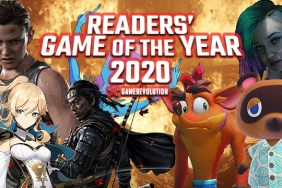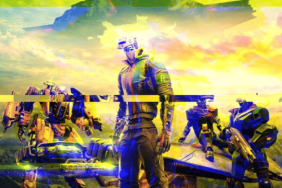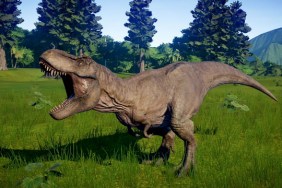While Disintegration doesn’t star any Spartans or Covenant forces, it does have some Halo influence behind it. Marcus Lehto, creative director of the game and president of V1 Interactive, was “the guy who built the Master Chief” and is using that knowledge to help develop a new title. But Disintegration isn’t quite a first-person shooter as it is also using strategic elements to give it a creative edge. Lehto recently sat down with us to speak about the origins of that inventive hybrid as well as the team’s liberating open structure and, well, raccoons.
GameRevolution: Obviously, with your background, Halo is a big part of your DNA. How did that transfer to Disintegration?
Marcus Lehto: A lot of that, as far as art style, the overall vibe of the story, and the world that we are creating, is what I do as a director. So it’s a similar feel in some ways. You might see some reflections of some elements that are familiar to you because that is my style. That’s what I build, and that’s how I like making games. But that said, Disintegration is its own thing altogether with regards to the characters, the vehicles, the world in which we get to play in as well.
ALSO: Disintegration seems to mix Halo first-person shooting with Socom-style tactics well
GR: There are also some members of the team known for the Socom franchise. How does that work itself in there?
ML: My business partner Mike [Gutmann] was at Zipper for almost 20 years and worked on the Socom games and MAG. So there’s that technical element that he was really intrigued by that I love about video games as well.
Between myself, Mike, and a lot of the other seasoned devs that we were able to pull together to make V1 Interactive plus some fresh new talent that we brought in, there’s a lot of great experience building games in both first-person shooter and tactical realms.

GR: The game has a unique pacing where it isn’t fast like a typical first-person shooter or slower like an RTS title. How do you make a multiplayer game with that sort of tempo?
ML: It is based on iteration and being able to play the game. We meet as a team and talk about the core mechanics and what we are trying to achieve. Fortunately, we are working on the Unreal 4 engine base, which allows us for a lot of quick iteration. We have an architecture that works that we are really excited about with regards to the guiding force for our goals that we have with the game. But within that, there’s a lot of freedom to try to experiment, especially with what we are making because there is nothing else like it out there. We can’t just point to game X, Y, or Z and say “This is what they are doing and we should try to emulate that.”
We instead meet as a group and play the game together. We talk about what is successful or what is not about a particular gameplay mechanics we are trying out like the way in which you command out units on the ground or the cooldown times on your cycle or that sort of thing. Then we will make changes and see what works and what didn’t and do that over and over until we have this core golden nugget. It took us a long time to get there but once it started to click, we knew we were onto something special.
GR: Was the pacing the “golden nugget?”
ML: Yeah, we weren’t chasing the tail of all the latest shooters or anything like that. We were looking for something unique. So we took that element of the first-person shooter, putting you in the seat of the grav-cycle, and we wanted to slow the pace down a little bit because they are a key component to you. So you’re tactically using them in combat. The player has the ability position to their crew tactically and even flank and do cool maneuvers in the grav-cycle. So you as an entity have a lot of freedom to do neat things together that you would never do in a traditional first-person shooter.
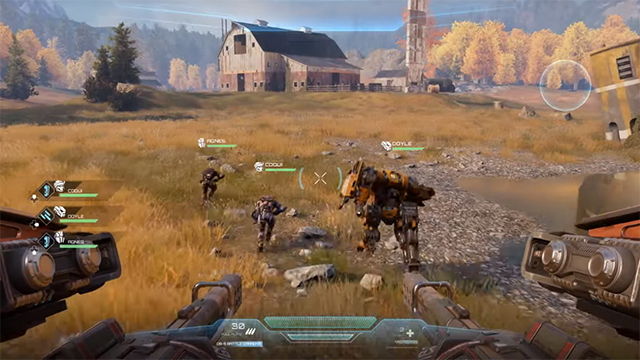
GR: How did the crew stuff come into the game?
ML: The whole game actually started as a real-time strategy game. We were initially micromanaging the little crews on the ground and they worked very similar to the ones we have right now. But when we decided we were developing something that was going to be up against a steep competition of lots of other games being built by gigantic studios out there, we felt we as a small studio needed to leverage our creativity and do something different that isn’t being done out there.
And we took a risk and turned that camera in the sky into a vehicle that made you an active participant in combat. You are firing down on the ground in addition to your units and you’re susceptible to being blown out of the sky as well. So that whole process took a little bit of time to figure out how it would all work especially since we took all of that micromanagement away. We didn’t want them to worry about every individual unit on the ground. So you’re literally firing down on the ground with a command pulse telling them to move to this location, target this enemy grav-cycle, or this objective. And it’s all through this fluid first-person mechanic that commands those units and it worked with the game we were already developing.
GR: Can you talk about the campaign at all?
ML: Yeah! It’s a little slower paced. You have the opportunity after combat to explore the world a little bit more and uncover information and look for stuff called salvage that you can bring back to invest in your ground crew so you can increase their skill trees.
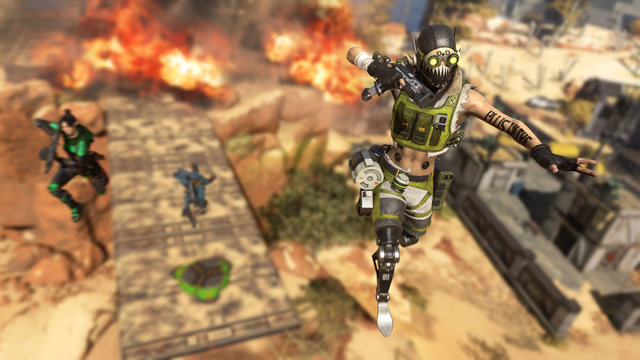
GR: So why make a campaign in an age where games like this (like Apex Legends, which is pictured above) usually go multiplayer only?
ML: It’s true. But there is a huge void where a lot of people want a single-player campaign. We’re filling that void because we love it. We love story. And me, personally, any good game with a deep lore and a deep story fiction behind it creates and a spark of imagination. And it really helps drive relevance and foundation to not only what we are doing with the single-player but multiplayer as well and beyond that.
GR: How do you make this game stick? Because multiplayer games live and die from how they stick.
ML: The biggest benefit we have as a small team is being able to connect and rely on the community to be there. We rely on them to provide support and feedback on what we are doing and we can be reactive to that. So what we want to do, and this is one of the great things about the game because it is a smaller form factor, is listen to what is connecting with the fanbase. And we can shift and pivot a little bit here and there and be like, “OK, they like these objective modes more than TDM. We can focus more on those.” So it really allows us the flexibility to focus on that kind of stuff as well as what kind of crews people are attaching to and what voids exist. Multiplayer is definitely one of those zones where a game has legs to continue as long we are filling the ecosystem with content to keep it healthy. That’s our goal there: to not let it get stale.

GR: You talked about the team size being smaller. How has working with a smaller team been?
ML: We’re only 30 people. It’s a tiny team compared to what I’m used to working on. That said, that’s how we started with Halo in the old days. Everybody knew each other and it was really important to get back to that. And I love a small team where everyone has their greasy fingers in the engine and everyone is building this together. It’s important to me that everyone has a part of the project that they’ve carved out and taken ownership over and so there’s a real investment from everyone.
GR: You have an open office. How does that environment help the team and the creative process?
ML: I grew up learning how to make games in an open atmosphere. So if there is an issue or question or something we are excited about, I can just say “Hey, come over here. This is really awesome. Let’s talk about this.” We can just grab people and talk about it immediately rather than scheduling something. And when we play our games together, you feel that electricity in the air. That’s the reason we do this together and it’s one of our strengths as a studio.
GR: What about the two “intern” raccoons in the staff picture (that sadly isn’t on V1’s website)?
ML: They are kind of our mascots and pets of the team. In Redmond, [Washington], we are [near a forest] so there are animals all over the place and we love it. We run across these raccoons every now and then so we decided to put one in our game. And it kind of just stuck in a weird way.
